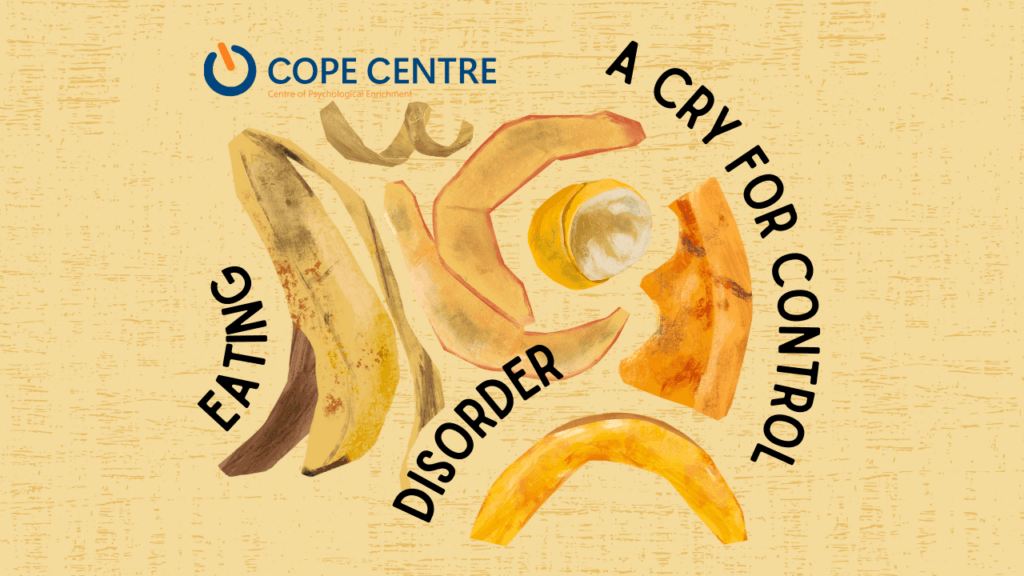When we hear the term “eating disorder,” we often picture someone obsessively counting calories or purging after a meal. But what if we’ve misunderstood the nature of these disorders? What if many so-called “disorders” are actually desperate attempts to regain control after enduring deep emotional trauma, betrayal, or neglect in childhood?
In today’s fast-paced world, we often categorize mental health conditions into neat labels, overlooking the emotional complexities beneath them. For those struggling with anorexia, bulimia, or binge eating disorder, food is often not the real issue—it’s about control. For many, this control was lost long ago, often in the chaos of an emotionally neglected upbringing.

The Hidden Wounds Behind Eating Disorders
Those suffering from eating disorders are not merely trying to conform to societal beauty standards. Often, they are survivors of trauma—betrayal by a trusted figure, emotional neglect by caregivers, or even more severe forms of violation. For them, food becomes a tool—either to exert control over their bodies or to numb long-buried emotional pain.
Consider emotional neglect, where children grow up feeling invisible or unimportant. These feelings of insignificance may later morph into self-worth issues that manifest as an obsession with body image. Restricting food intake, overeating, or purging can become ways to express emotions they can’t verbalize. It’s a form of protest—a desperate bid for autonomy in a world where they once felt powerless.

For someone who has experienced abuse, the body itself may become a battleground. In anorexia, denying the body’s basic needs is a form of punishment, an attempt to control and reject what they endured. In bulimia, purging becomes a symbolic way of expelling the internalized pain and violation. In both cases, the pursuit of control—real or perceived—is at the heart of the behavior.
Emotional Trauma: The Hidden Root
For decades, psychoanalysts have drawn connections between early childhood trauma and adult behavior. Freud and his successors, like Donald Winnicott and Melanie Klein, recognized how our early experiences shape emotional and psychological development. They understood that what we often categorize as disorders—including eating disorders—are manifestations of unresolved trauma and unmet emotional needs.
But what if we shifted our thinking? What if we viewed these behaviors not as pathologies, but as coping mechanisms? Eating disorders are, in essence, a person’s way of managing overwhelming emotions that are too painful to confront directly. This shift in perspective allows for a more compassionate and effective approach to treatment.

The Path to Healing
Treating eating disorders is far more complex than simply monitoring weight or following a nutritional plan. The real healing happens when we address the emotional scars lying beneath the surface. Psychoanalytic therapy can be a powerful tool, helping individuals reconnect with their buried emotions, process their trauma, and understand their deep-rooted need for control.
In therapy, the focus often shifts to early relationships, particularly with caregivers, to uncover the origins of disordered eating patterns. Together, the patient and therapist work to break the cycle of using food as a coping mechanism, building healthier ways of expressing emotions and dealing with stress.
Research continues to affirm that healing from eating disorders requires more than surface-level interventions. True recovery comes from addressing core traumas and teaching individuals how to reclaim control over their lives—this time in a healthier, more sustainable way.
Conclusion
Written by Mayra Bufrau
References
- Bruch, H. (1978). The Golden Cage: The Enigma of Anorexia Nervosa. Harvard University Press.
- Freud, S. (1917). Introductory Lectures on Psychoanalysis. Hogarth Press.
- Winnicott, D. W. (1965). The Maturational Processes and the Facilitating Environment. Hogarth Press.
- Klein, M. (1952). The Origins of Transference. International Journal of Psycho-Analysis, 33, 433-438.
- Farber, S. K. (2000). Hungry for Ecstasy: Trauma, the Brain, and the Influence of the Sixties. Rowman & Littlefield.
